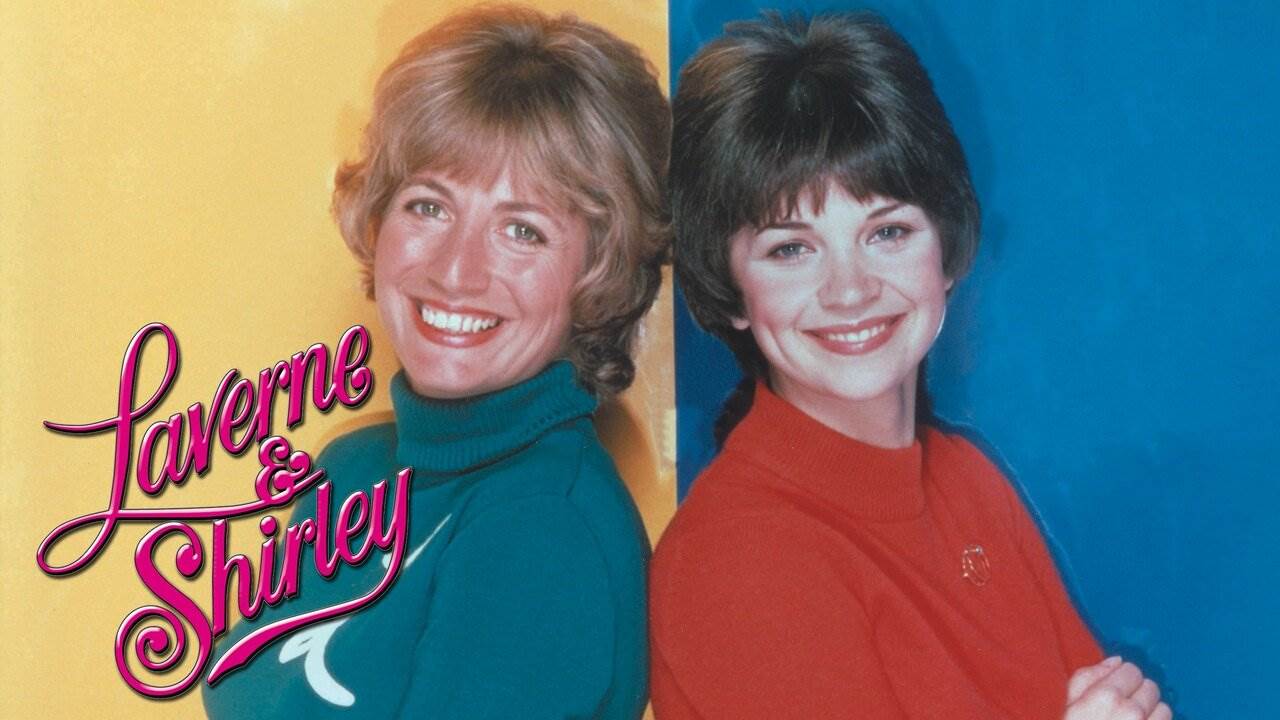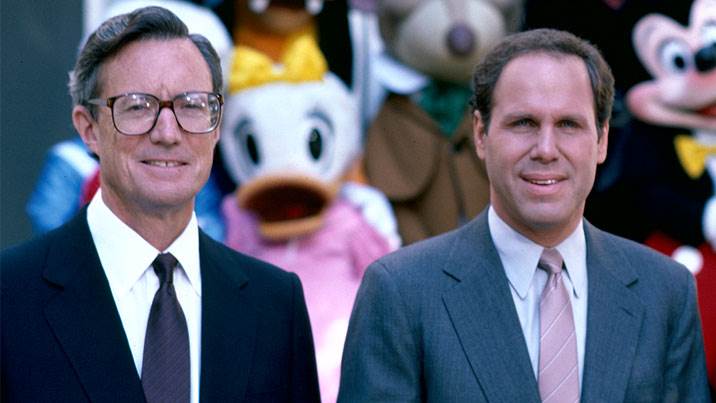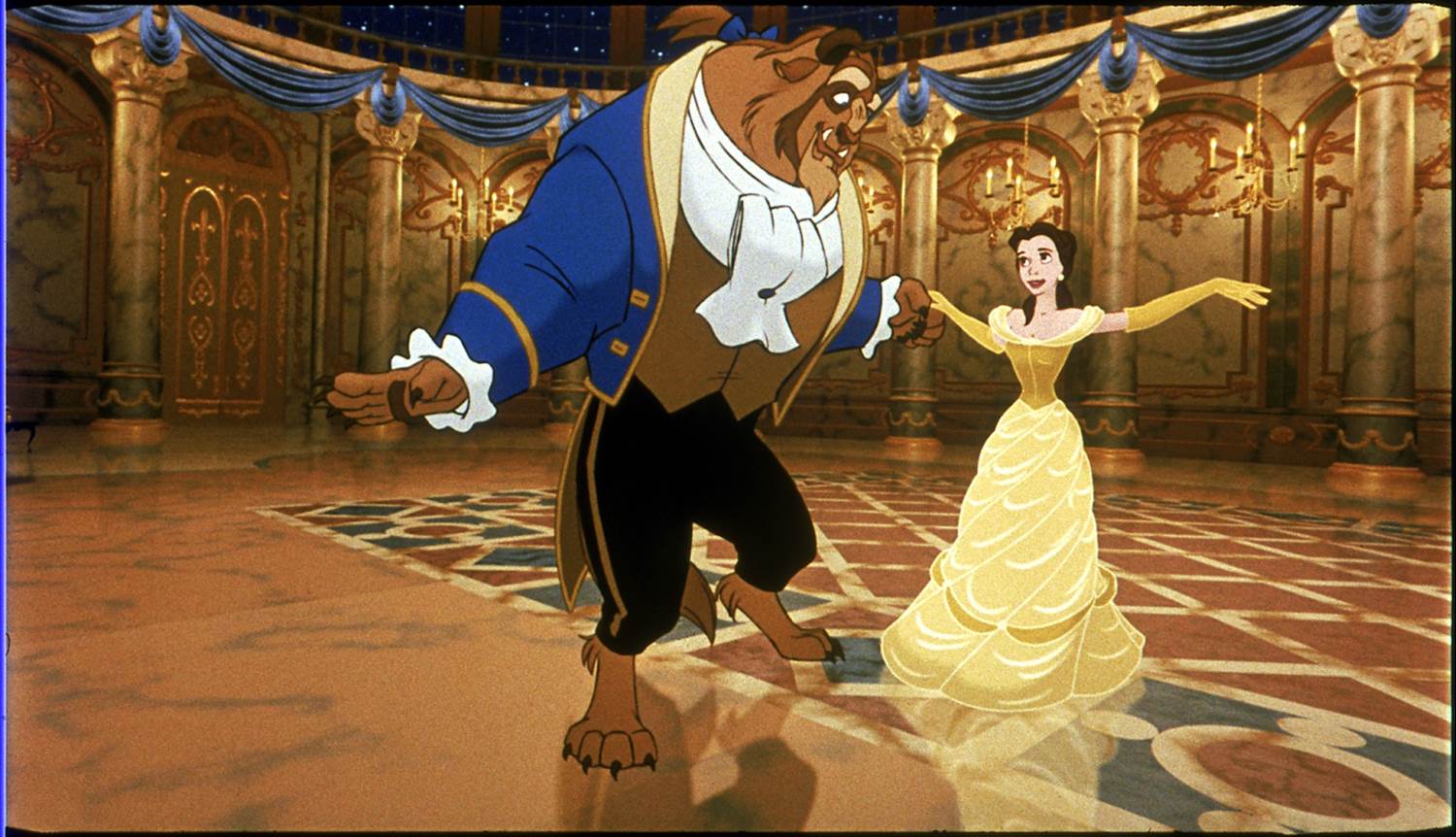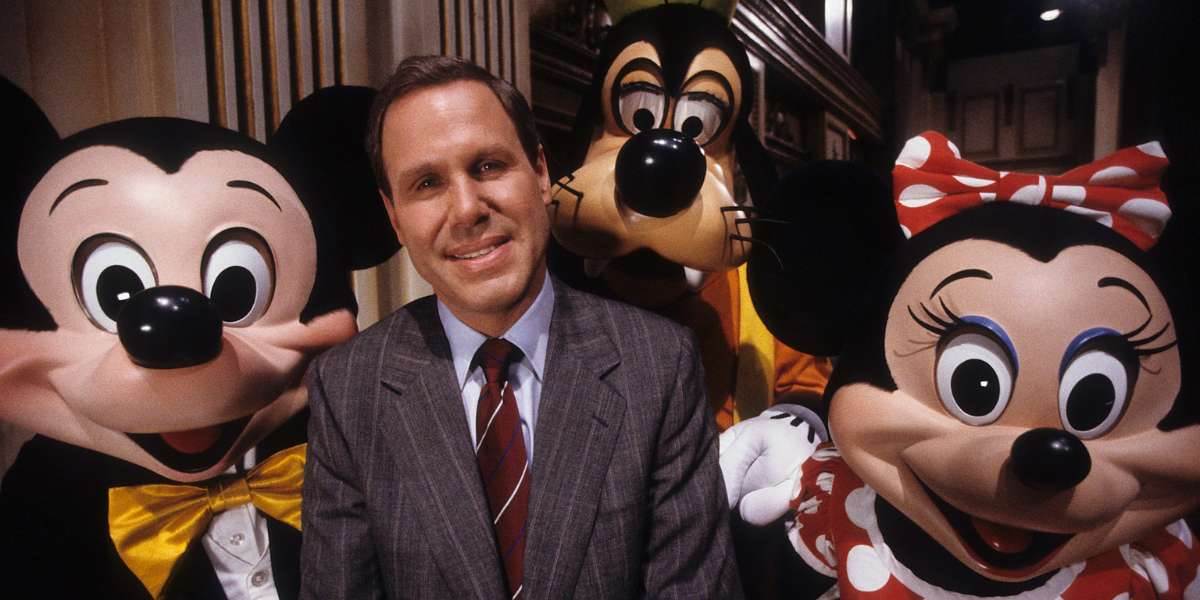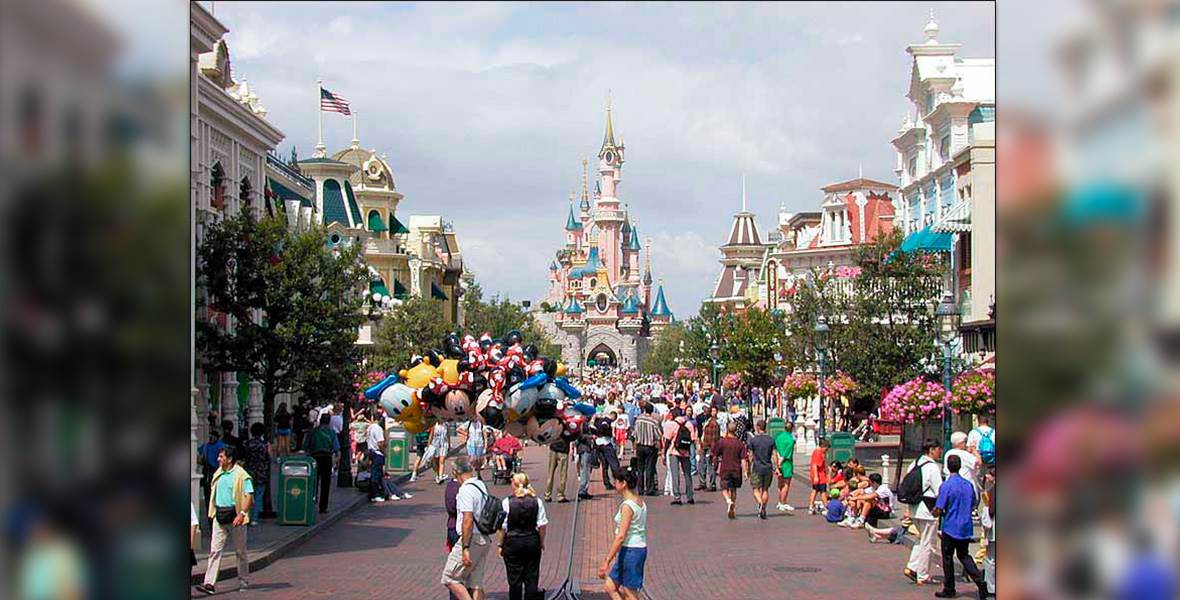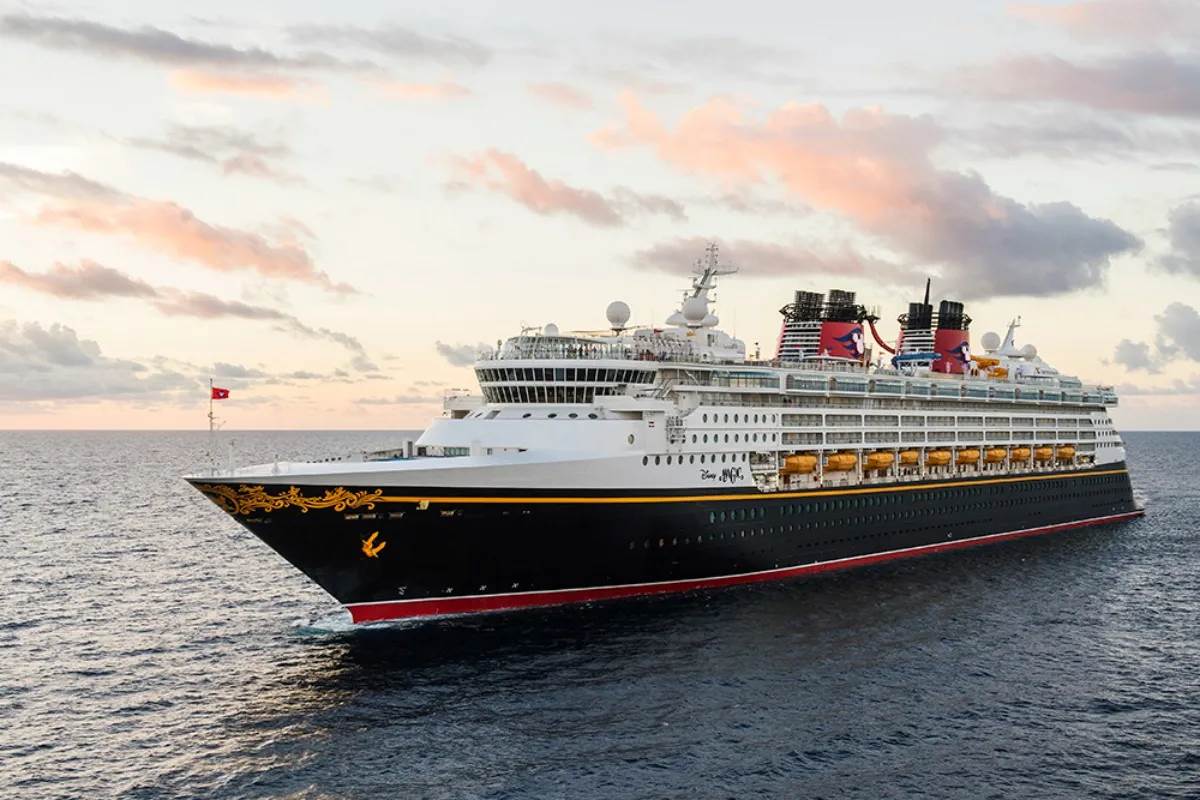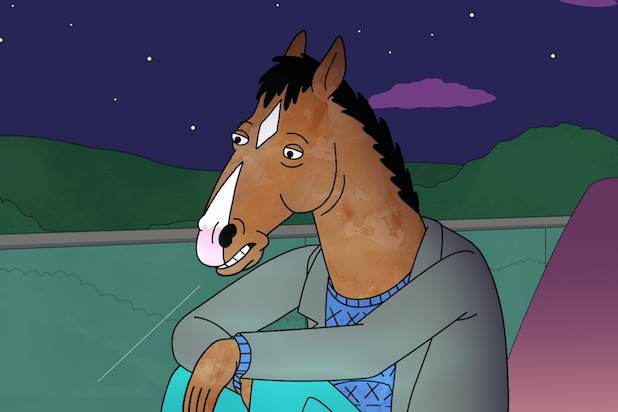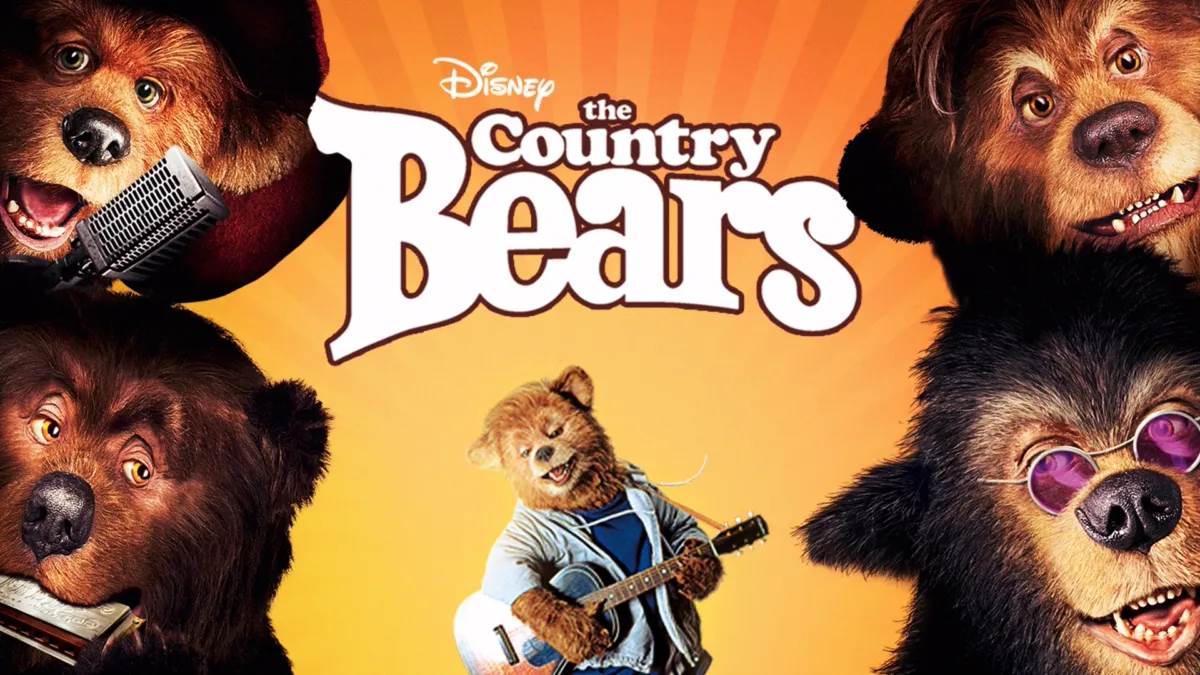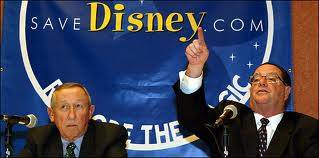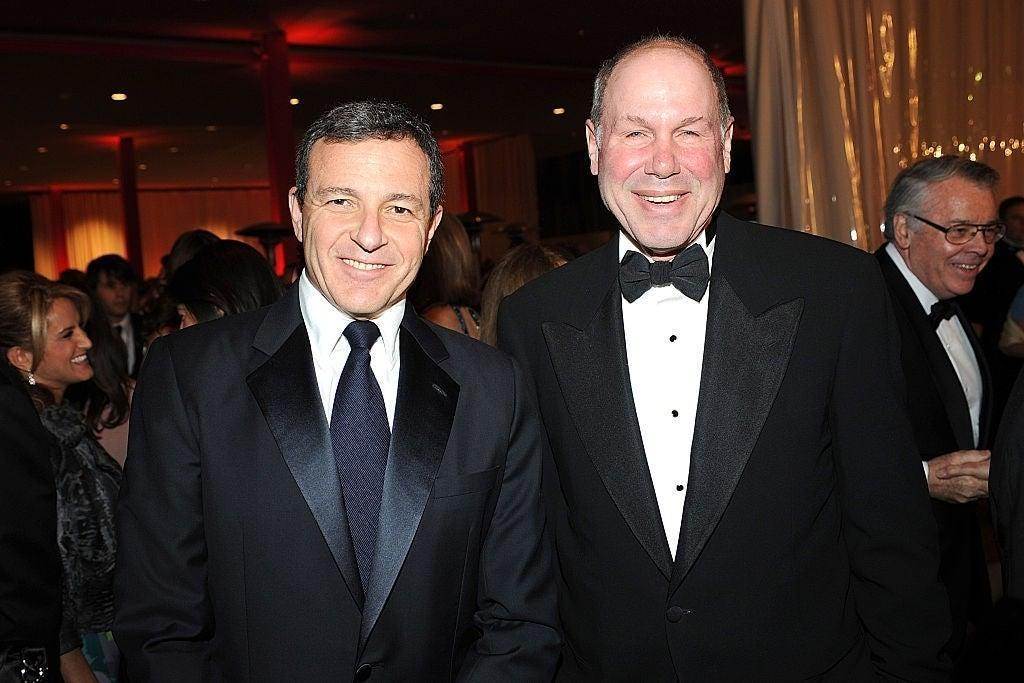Why Isn’t He a Disney Legend? Former Disney CEO Michael Eisner
Why Isn't He a Disney Legend? Former Disney CEO Michael Eisner
An outpouring of sentiment was showered upon the latest class of Disney Legends honored at D23: The Ultimate Fan Event on August 11, 2024. These honors were well deserved by the immensely talented class of 2024.
Here at Laughing Place, our Disney Legends series digs a little deeper into the individuals who have provided priceless contributions to the Disney catalog, and have been recognized by Disney for their talents. But every now and then comes the curious case of an individual who has the credentials to easily be considered a Disney Legend, but has yet to be formally honored as such.
We previously recognized filmmaker Tim Burton - creator, director, and producer of many successful Disney (and non-Disney) films - as a “should-be" Disney Legend. Now it’s time to recognize another individual, who was primarily responsible for turning around a very troubled Walt Disney Company in the 1980s, returning it to its glory, thanks to the “Disney Decade" for growth in the theme parks and the “Disney Renaissance" in animated films. If you guessed former Disney CEO Michael Eisner, you are correct! Let’s learn more about this brilliant businessman in this installment of “Why Aren’t They a Disney Legend?"
Image: Disney
Michael Eisner - The New Yorker
Michael Dammann Eisner was born March 7, 1942 to an affluent, Jewish family in Mount Kisco, New York. Both of Michael’s parents were active in the business world, with his mother’s family owning the American Razor Safety Company, and his father working as a successful lawyer and regional administrator of the U.S. Department of Housing and Urban Development.
Michael spent his childhood living on Park Avenue, amid the bustling streets of Manhattan. He attended high school at Lawrenceville School, though he endured more than his share of antisemitism in the process. Looking for a change from New York, Michael attended Denison University in Granville, Ohio, where he graduated in 1964 with a Bachelor of Arts degree in English.
Making the Rounds in Network Television
While a degree in English didn’t exactly scream “entertainment executive," Michael got his feet wet in the entertainment business with a summer job working as a page at the NBC television network. He contributed to various aspects of television production including business, consumer, and content assignments. Michael’s experience as a page led to a position at NBC logging advertising times.
After his brief time with NBC, Michael hopped over to CBS television - a major competitor to NBC. At CBS, Michael was in charge of the placement of ads in children’s shows, using his experience with advertising to make an impact in the network’s programming department. Like his time with NBC, Michael’s time at CBS was limited.
In 1966 Eisner was recruited by ABC president Barry Diller to join his third different television network, as an assistant to the network’s national programming director. At ABC, Michael got a chance to really shine. He quickly accelerated, becoming vice president for daytime programming in 1971 and senior vice president for prime time production and development in 1976. During this time with ABC, Eisner was recognized as the primary influence behind the network’s rise from the bottom of the network rankings to the top.
When Diller moved on to become chairman of Paramount Pictures, Michael stayed put, hoping to move into Diller’s vacated position. Unfortunately for Michael, the position went to Fred Silverman, though Michael stayed at ABC to continue gaining valuable experience.
Breaking Into the Studios
In 1976, Diller came looking for Michael, and took him over to Paramount, making him president and Chief Operating Officer of the movie studio.
As part of upper management at Paramount, Michael had influence on the production of many unforgettable films, including Saturday Night Fever (1977), Grease (1978), the Star Trek franchise, Raiders of the Lost Ark (1981), Flashdance (1983), Beverly Hills Cop (1984), Footloose (1984), and many others.
While primarily a film studio, Paramount also produced several iconic television shows during Michael’s tenure with the studio, including Happy Days (1974-1984), Laverne & Shirley (1976-1983), Cheers (1982-1993), and Family Ties (1982-1989).
Image: Paramount
Under Michael’s guidance, Paramount also debuted the syndicated newsmagazine Entertainment Tonight. Fun Fact: Entertainment Tonight has been running since 1981, making it the Guinness World Record holder as the longest-running entertainment news program on television.
When Diller left Paramount in 1984 to pursue an opportunity with 20th Century Fox, Michael - as Diller’s protégé - expected to step into the network’s open position as studio chief. But when the position was given to Frank Mancuso, Sr., Eisner left Paramount, looking to elevate his position elsewhere.
When one door closes, another often opens. In the case of Michael Eisner, the closed opportunity at Paramount proved to be a blessing in disguise.
Knocking on Disney’s Door
Around the same time Eisner was looking to move on from Paramount, The Walt Disney Company was desperately looking for new leadership. The entertainment pioneer had fallen on hard times in the late 1970s and early 1980s, both financially and creatively. During this time, Disney barely survived several corporate takeover attempts, and President/CEO Ron Miller was not able to move the company forward.
Disney shareholders Sid Bass and Roy E. Disney (nephew of company founder Walt Disney, and son of Walt’s brother Roy) brought in Michael in 1984 as CEO and chairman of the board. Disney also hired Frank Wells and installed him as President, returning the company to the two-headed leadership dynamic that worked so well for Walt and Roy in the company’s earliest days.
Image: Disney
The Eisner/Wells partnership proved extremely prolific. Micahel was the creative lead, and Wells took care of the business end of things. With Wells at his side, Michael acted quickly to turn Disney around. He began by syndicating the company’s classic movies and television shows, reminding the public why they loved the Disney brand. In fact, Michael himself hosted The Wonderful World of Disney on ABC. Michael also approved the production of several edgier films meant to appeal to a wider audience. Under Disney’s Touchstone Pictures label, films such as Down and Out in Beverly Hills (1986), The Color of Money (1986), and Pretty Woman (1990) were big successes.
While Disney’s progress in live-action films was important, the studio’s historically strong animation department had been struggling for years. In the earliest days of Michael’s tenure, he and Wells considered shutting down the animation department altogether. But Roy Disney and Jeffrey Katzenberg - a newcomer to the Disney fold - worked to resurrect the studio’s animation excellence. With that common goal in mind, Michael supported the focus on restoring the company’s reputation for top-notch animated films. The first film to come out of the studio’s newfound focus was actually an animated/live-action hybrid 1988 film Who Framed Roger Rabbit.The multi-studio collaboration between Disney (under the Touchstone label), Amblin Entertainment, and Silver Screen Partners III became a worldwide hit, putting Disney back on the radar screen.
The Disney Renaissance
Following Roger Rabbit, Disney turned out a string of animated hits reaching heights never before seen in animated films, starting with 1989’s The Little Mermaid. As the decade turned, the 1990s saw more epic hits, including Beauty and the Beast (1991), Aladdin (1992), and The Lion King (1994), among others. This string of critical and commercial hits - now known as the Disney Renaissance - concluded with 1999’s Tarzan.
Image: Disney
The Disney Renaissance not only returned Disney to the gold standard of animation; it also provided the studio with a much needed financial boost, giving Disney the ability to expand offerings in other markets. Striking while the iron was hot, Michael diversified Disney further into television, publishing, and home video markets.
While Michael Eisner put great effort into improving Disney’s product internally, he also recognized and leveraged the value of outside resources. In 1991, Michael oversaw Disney’s partnership with the computer-animation studio Pixar, opening the door to mega-popular franchises like Toy Story, Monsters, Inc., Finding Nemo, and Cars, among many others.
In 1993, Disney acquired independent filmmaker Miramax Films, giving Disney access to the independent film market.
Image: Fortune Magazine
In 1996, Michael Eisner spearheaded a $19 billion merger between Disney and ABC/Capital Cities, giving Disney a percentage of ESPN, The History Channel, A&E Network, and Lifetime Television, along with a publishing group including countless trade journals, shopping guides, consumer magazines, weeklies, and daily newspapers.
Disney’s later acquisitions under Michael’s leadership included the 2001 purchase of Fox Family Channel (now known as Freeform) and the 2004 acquisition of the Muppets.
The Disney Decade
Prior to joining Disney in 1984, Michael Eisner knew very little about the company’s theme park business. Over his first half-decade with Disney, he spent significant effort getting to know the theme park and resort business. But as the 1990’s set in, Michael publicized a plan to build new Disney parks around the world, expand existing parks, and invest in new media and films. Under this plan, dubbed "The Disney Decade," Michael had sky-high expectations for the company he was shepherding toward the millennium.
Image: Disney
Disney Parks projects completed under Eisner include the following:
Disney-MGM Studios (now Disney's Hollywood Studios)
Opened in Walt Disney World in 1989, Disney’s third Florida-based theme park was conceived as a celebration of all things Hollywood. The concept grew out of an idea to construct a pavilion at nearby EPCOT Center based on “old Hollywood." The idea quickly outgrew the size of a single EPCOT pavilion, into a full-blown theme park - spurred in part by news that entertainment competitor Universal would be building a Hollywood studio-themed park only minutes away. Disney-MGM Studios was initially considered a “half-day park," but like all Disney theme parks, it has grown over time into a more complete “full-day" experience.
Euro Disney Resort (now Disneyland Paris)
Image: Disney
Opened in 1992, Euro Disney Resort became the first Disney resort outside the U.S. to be owned entirely by Disney (Tokyo Disney, which opened in 1983, was - and still is - owned by the Oriental Land Company). Euro Disney was troubled from the start. The project went hugely over budget, had poor regional support, and endured low attendance in its initial years. The European theme park put such a strain on Disney’s finances, that Michael later acknowledged the resort to be his "real financial disappointment." But Michael led an effort to course-correct the troubled resort, and after those initial lean years, the resort did eventually begin to turn a profit.
In 2002, the resort added Disney-MGM Studios Paris (since renamed Walt Disney Studios Park, and soon to be renamed again as Disney Adventure World).
Disney’s Animal Kingdom
Opening in 1998, Disney’s Animal Kingdom was the company’s most unique park to open since EPCOT Center opened in 1982. Disney received kudos for faithfully creating a theme park dedicated to nature's finest creatures. But similar to Disney-MGM Studios, Disney’s Animal Kingdom struggled to keep guests entertained for a full day. After working out some bugs (pun intended, so I could point you to this fun article celebrating Disney’s top bugs) in the early years of operation, Disney’s Animal Kingdom has steadily improved and rounded out to an impressive full-day theme park in its own right.
Disney's California Adventure Park (now Disney California Adventure)
Similar to Disney’s previous theme parks opened during Eisner’s tenure, Disney's California Adventure Park - opened in 2001 - struggled out of the gate. The park was criticized by guests as being too adult-oriented, as well as having less original content than Disneyland, which was located only steps away across a shared esplanade. Disney spent the next several years incrementally adding new rides, shows, and attractions, and implementing other promotions. In 2007, Disney initiated a major overhaul of the park which lasted for five years and was completed in stages, culminating with a re-dedication of the park in June 2012.
Disney Cruise Line
Image: Disney
Outside of film and television, Michael Eisner also started a little thing called Disney Cruise Line in 1995. The genesis of Disney Cruise Line is a long and interesting story for another time. But suffice to say, Disney enjoyed years of a successful partnership with Premier Cruise Line, allowing Disney to enhance select cruise itineraries with a little Disney magic. When Premier stepped away from the partnership, Eisner led Disney into creating their own cruise product. After years of preparation and a substantial financial investment, Disney Cruise Line has grown from a simple pair of ships in 1996 to a current fleet of five, with nine more on the way through 2031.
Troubled Times
In the later 1990s, and as the Millennium arrived, Michael Eisner struggled at the helm of Disney. A host of internal disputes and Michael’s unwillingness to share executive responsibilities left him with many corporate enemies and very few allies. As the Disney Renaissance faded, a string of animation failures tarnished an otherwise impeccable run of outstanding animation success. Live-action box office bombs contributed to a dip in Disney’s reputation for excellence. Lagging theme park revenues - primarily caused by Euro Disney’s early struggles - taxed the company’s finances. Several other significant financial and creative missteps lost Eisner the support of Disney’s Board of Directors. With mounting pressure to cede control, Michael Eisner resigned from the Walt Disney Company on September 30, 2005. Current Disney CEO Bob Iger stepped in to fill Michael’s shoes.
Life After Disney
Following his departure from Disney, Michael Eisner formed the Tornante Company, a privately held investment firm specializing in acquiring and operating media and entertainment companies.
Tornante has done a little bit of everything. In 2007, Tornante and Madison Dearborn Partners purchased Topps collectibles company for $385 million. Related to this endeavor, Michael produced a mockumentary style show about his takeover of the Topps Company, called "Back on Topps." Tornante later sold Topps in 2022.
On television, Tornante funded the Netflix hit animated television series Bojack Horseman, which ran from 2014 through 2020.
Image: Netflix
In 2017, Tornante acquired the Portsmouth Football Club, based in Portsmouth, Hampshire, England.
Fun Fact: You may wonder where Michael came up with the name “Tornante?" While bicycling around Italy following his departure from Disney, Michael saw a signpost stating “tornante," which means "hairpin turn" in Italian. Given Michael’s sudden and extreme change in professional direction, the name felt fully appropriate.
Awards and Honors for a Lifetime in Entertainment
Since leaving the helm of one of the largest entertainment companies in the world, Michael Eisner has received honors related to his time with Disney, as well as his time before with Paramount and network television.
In January 2006, Disney's corporate headquarters in Burbank was renamed to Team Disney – The Michael D. Eisner Building, in Michael's honor.
Michael received a star on the Hollywood Walk of Fame in 2008, for his contributions to motion pictures.
In 2012, Michael was inducted into the Television Academy Hall of Fame.
But to date, Michael is missing one key acknowledgement. He has not been honored as a Disney Legend.
So Why Isn’t Michael Eisner a Disney Legend?
With all of the successes and accolades listed in the sections above, one might wonder why Michael Eisner has not been recognized as a Disney Legend. Many folks have been honored as a Disney Legend, with far fewer contributions to the company. During Michael’s tenure with Disney, he led an epic rebound of the company, reviving it from a studio struggling to one which again led the industry in creativity, ingenuity, and success. Well, there are reasons, some of which dive way too deep to be fully explained here. For a full and thorough account of Michael’s years with Disney, I highly recommend DisneyWar by James B. Stewart. In the meantime, let’s touch briefly on a few of the issues which plagued Michael during his time with Disney.
Media Missteps
Disney’s media success under Michael Eisner wasn’t without its share of struggles. The later years of his time with Disney were particularly tumultuous. The studio endured a string of box-office bombs in the early 2000s, including The Emperor’s New Groove, Treasure Planet, Around the World in 80 Days, and the universally loathed The Country Bears. Ultimately, studio successes and failures land at the feet of the leader, and Michael took most of the heat for subpar productions.
Image: Disney
On television, huge hits like Who Wants to Be a Millionaire were offset by giant misses, when Michael passed on eventual juggernauts such as the reality sensation Survivor and the long-time successful CSI crime drama franchise.
With the rise of the internet leading to the turn of the millennium, Michael refused to consider a partnership with AOL. The early internet pioneer turned to Time Warner instead, forming a partnership intended to lead both companies into the new millennium. As history proved out, AOL did not maintain their status as the internet pioneer which would benefit Time Warner. But as an answer to the AOL/Time Warner merger, Disney, under Michael’s direction, started its own web portal provider - Go.com. As a web provider, Go.com largely failed in its ambitions. Disney has gradually and systematically retired portions of Go.com’s services, leaving the service all but extinct.
Getting Personal with Personnel
Behind the camera, Michael’s legacy in management is tarnished by a series of clashes with high-level executives, the biggest of which was the years-long dispute with film chief Jeffrey Katzenberg. During the period following the tragic 1994 death of Disney President Frank Wells, Michael was unwilling to share control of the company with another individual.
When Katzenberg’s relentless push to fill Wells’ position as the number two studio head finally wore Michael out, their once-prolific business relationship deteriorated. Eisner refused to offer Katzenberg the coveted position of President of the Walt Disney Company. When Katzenberg finally left to pursue other opportunities (successfully launching DreamWorks Animation along with Steven Spielberg and David Geffen), Michael refused to pay Katzenberg the bonus owed to him in his Disney contract. Michael rebuked an opportunity to settle with Katzenberg for as little as $60 million, opting to take the matter to court, where Disney ultimately paid Katzenberg roughly $280 million.
In 1995, when Eisner finally decided to select a president to work with him, he chose his good friend Michael Ovitz, the former head of Creative Artists Agency. Michael had trouble trusting Ovitz right from the start, and also refrained from supporting Ovitz in the presence of other Disney executives. Michael fired Ovitz after a tumultuous 15 months on the job, and lost one of his best friends in the process.
During the mid-1990s and into the early 2000s, Disney enjoyed an immensely fruitful partnership with Pixar - the small but creatively rich powerhouse animation studio led by Apple cofounder Steve Jobs. Pixar was emerging as a leader heading into the next generation of animation. Disney’s ten-film contract with Pixar was a massive success for both companies, but the relationship between the studios was strained because Michael maintained a distrust of Pixar as a whole, and Steve Jobs as an extension of Apple. The last straw in the strained relationship came when Michael reportedly called Jobs and others at Apple “Shiite Muslims" for what he reportedly thought were “extreme views." This comment was likely spurred by Apple’s 2001 “Rip. Mix. Burn." iMac advertising campaign. Michael saw the ads as encouraging illegal pirating of music and video files, which he found threatening as a leader of Disney as a content creator. A Disney spokesperson at the time maintained that Michael “categorically denies" calling anyone a “Shiite Muslim." Jobs maintained that he would never do business with Disney again as long as Michael was leading the company. Michael’s successor Bob Iger was eventually able to save the relationship and keep Pixar under Disney’s umbrella, but not until after Michael had left the company.
The final blow, following years of deteriorating relationships, came when Roy E. Disney left his position with his family’s company and initiated the "Save Disney" campaign along with fellow board member (and former Michael Eisner ally) Stanley Gold. In a scathing letter to Michael, Roy relayed a litany of personal and professional griefs disparaging the embattled CEO. As a result of this very public feud, Michael lost the confidence of much of Disney's Board of Directors, which stripped him of his chairman’s title in March 2005. Bowing to the pressure from the campaign, Eisner announced that month that he would step down as CEO before the end of his contract.
Ironically, upon leaving the Walt Disney Company in September 2005, Michael made one of his best career decisions, handing day-to-day duties to now-current Disney CEO Bob Iger. Curiously, Michael maintained for years that Iger was not “top management material," and continuously doubted him in the privacy of other Disney executives. Reading between the lines, perhaps this was because Michael was threatened by the promise he saw in Iger, who has since gone on to be recognized as one of the strongest CEOs in entertainment history.
Michael Eisner - a Solo Genius
Overall, Michael Eisner was a brilliant and imaginative leader for The Walt Disney Company, entering at a time when the company badly needed repair. Being hired at the same time as President Frank Wells, the pair shared equal footing with regard to tenure and seniority, and led a prolific period of rebound for Disney. But upon the passing of Wells, Michael was unwilling to fill the void left by Wells, opting to keep control of most company aspects by himself. Over the ensuing years, despite occasional failed attempts to share responsibility at the top, Michael clutched ever tighter to his near-absolute control of the company’s operations, gradually estranging himself from all of his supporters in the process.
By the time Michael left Disney, he had very few supporters remaining, save for family and a few professional friends. The initial years following Michael’s departure from Disney were filled with frigid acrimony, and his legacy with the company was badly tarnished by the revelations of his professional and relationship-based missteps of his later years.
Is Time Healing the Wounds?
Over time, the rift between Michael Eisner and Disney has begun to mend. Recent years have seen Michael publicly applaud Disney for various successful ventures. This was especially evident in Michael’s public support of Bob Iger during the Nelson Peltz Proxy fight, which was resolved in Disney’s favor in April 2024. Disney shareholders voted to re-elect all existing Disney Board Members, rejecting Peltz’s proxy challenge.
Publicly, there is rising sentiment among most Disney fans that Michael Eisner accomplished truly great things for the company. This upswell of public affection is gaining momentum.
While Michael Eisner was not a perfect CEO, his contributions to The Walt Disney Company are indisputable. Perhaps, in the near future, Bob Iger and Disney will consider bestowing the honor of Disney Legend upon him. Time will tell, and I certainly hope Disney will forgive.
Do you think Michael Eisner should finally be named a Disney Legend? Reach out on social and let us know what you think. In the meantime, check out some deserving Disney Legends in our spotlight collection.
Offer a comment or share this article with a friend by reaching out on social at: Instagram X
Sources:
DisneyWar - James B. Stewart, 2/9/2005
Waking Sleeping Beauty - Don Hahn, 9/5/2009




